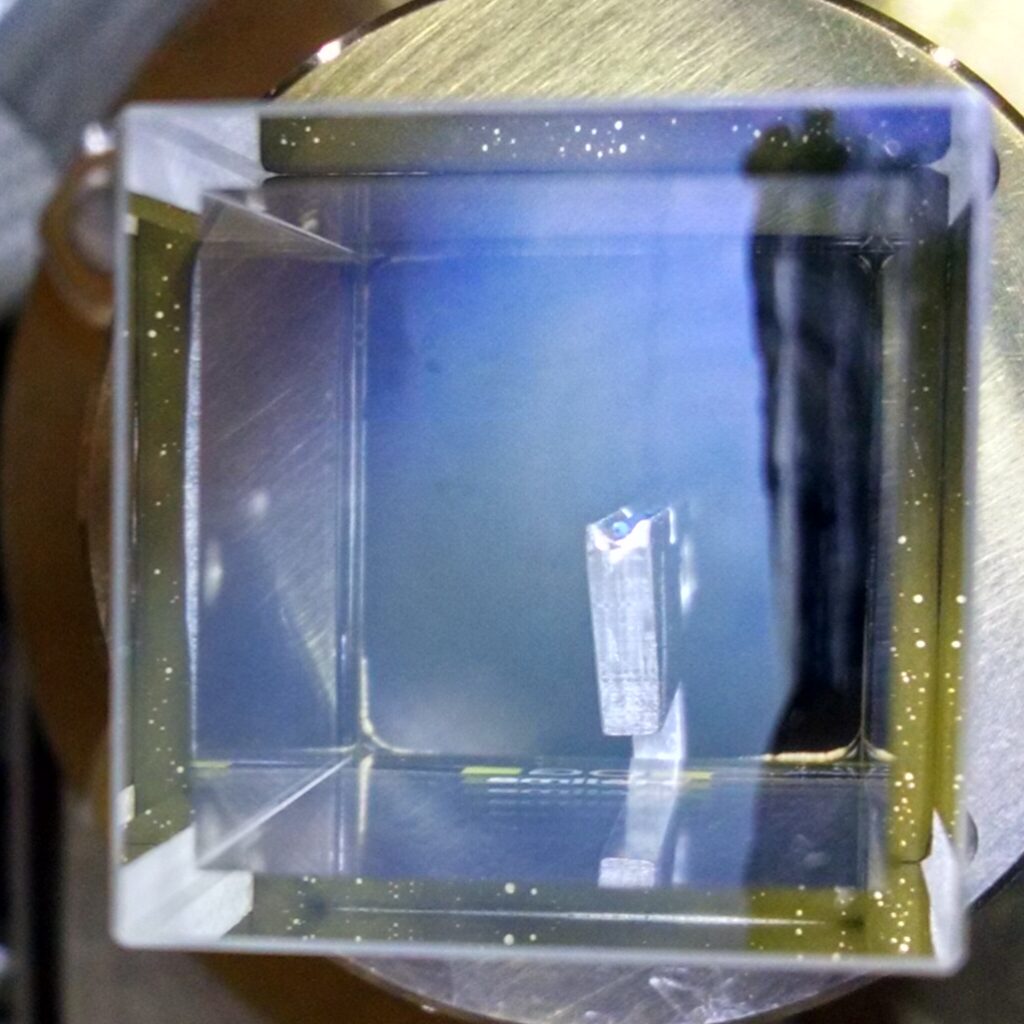Why?
Combining cold atoms with optical resonators, superconducting circuits or nanomechanics opens many possibilities for quantum engineering. Unfortunately, this often comes at the cost of a bad optical access. As the atoms are generally controlled optically, putting things around them prevents one not only to image them precisely, but also to control their positions or their internal states with a high spatial resolution.

How?
To image and optically control cold atoms in spatially-constrained environments, we replaced many optics by a single multimode optical fiber. Ours has a transverse size of only 225 µm so it can squeeze in tight spaces, and it can be bent to directly guide light out of the vacuum apparatus. At the same time it has a high numerical aperture (NA=0.5) offering a ~1 µm resolution over a ~100 µm field of view, without additional in-vacuum optics.

Light propagates through this fiber in a very complex way. When we create a bright light spot at one end of the fiber, what goes out at the other end is a seemingly random speckle. Fortunately, optics in random media is now a very active field of research, and many of its protocols can be adapted to our situation. With the help of auxiliary laser beams, cameras and spatial light modulators, they allow us to unscramble images transmitted through the fiber, or to reshape light beams to manipulate atoms.
Currently, this system allows us to transport cold atoms over a few mm from the magneto-optical trap towards the fiber’s tip, to load them in one or several optical microtraps with sizes as small as 1.2 µm, to Dopper-cool them, and to image them in absorption or in transmission. Our next goals are to make it more efficient, robust and autonomous, so that it can be integrated in more complex setups.





